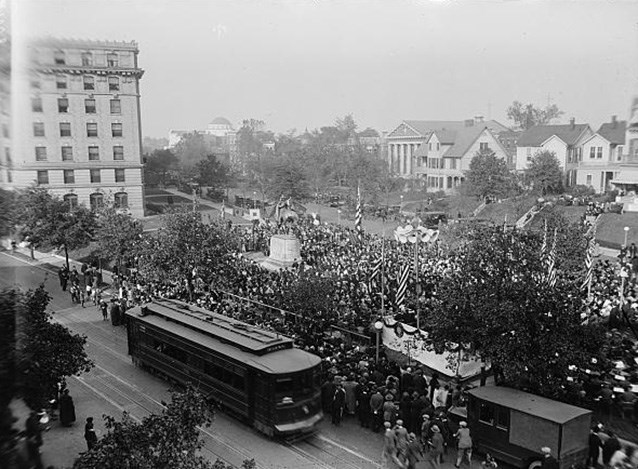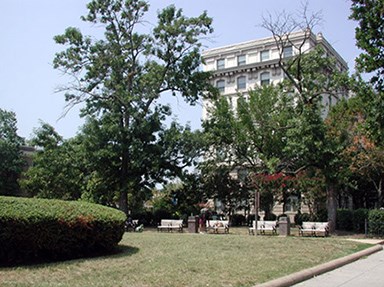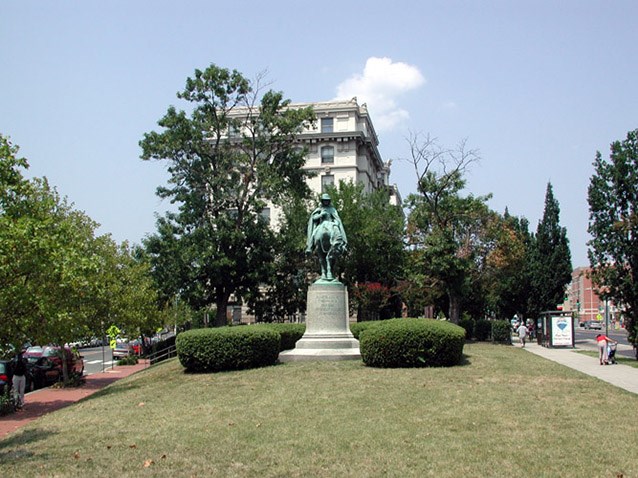Last updated: October 14, 2021
Article
Asbury Memorial Cultural Landscape

Harris & Ewing Collection (Library of Congress)

NPS
The upper 16th Street Corridor and Mount Pleasant, where US Reservation 309 B is located, grew further as a result of the streetcar and suburban development in Washington, DC. The street car enabled middle class residents to move from the central city to the suburbs in an attempt to recreate the bucolic villages of the past in an urban environment. Mount Pleasant was one of Washington, DC’s earliest streetcar suburbs.
Reservation 309 B was created as part of a grand plan advanced by Mary Henderson, the wife of Missouri Senator John Henderson, and guided by the 1902 McMillan Commission Report. Streets constructed after 1902 were heavily influenced by the McMillan Commission which intended to extend the Beaux-Arts city past the monumental core and into Washington’s neighborhoods. 16th Street was important not for being the heart of the old village of Mount Pleasant, but because it played an important role in the vision of a new Washington.

NPS (2007)
Though the Asbury Memorial, US Reservation 309 B still retains many characteristics of its 1924 design, the cultural landscape is in fair condition. It is subject to heavy use by pedestrians, including homeless individuals. This use affects the soil, vegetation, and furnishings of the park. The vegetation, especially the historic ash trees, should be pruned and or replanted as necessary to improve the landscape to good condition. The 1924 and 1988 landscape plans may serve as guides.
Quick Facts
- Cultural Landscape Type: Designed
- National Register Significance Level: National
- National Register Significance Criteria: C
- Period of Significance: 1903-1924
